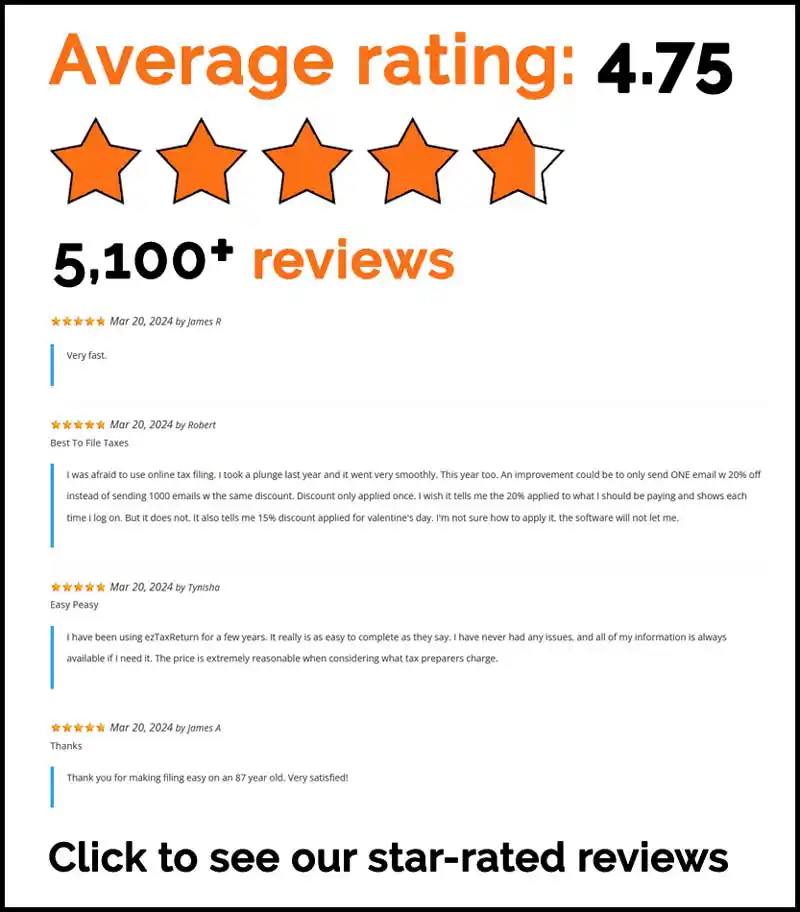Curious about which pregnancy-related medical expenses you can deduct on your taxes? From prenatal visits to postpartum care, many costs associated with pregnancy may qualify as tax deductible pregnancy medical expenses. This guide will explain which expenses are tax-deductible, how to claim them, and what limitations to be aware of.
Key Takeaways
- Many pregnancy-related medical expenses can be tax-deductible, including costs for prenatal care, labor, delivery, and postpartum care. Keeping detailed records is essential for claiming these deductions.
- Certain expenses, like cosmetic procedures and maternity clothing, are not deductible, so it’s crucial to know which costs qualify to maximize tax benefits.
- Health Savings Accounts (HSAs) and Flexible Spending Accounts (FSAs) can help manage pregnancy-related expenses with pre-tax contributions, providing additional ways to save on healthcare costs.
Understanding Tax Deductible Medical Expenses
Identifying tax-deductible medical expenses is crucial for maximizing your tax savings. The IRS has specific standards that determine which medical expenses are eligible for deductions. These include costs associated with the diagnosis, mitigation, treatment, or prevention of disease, as well as payments for legal medical services, equipment, and supplies.
Qualified medical expenses according to IRS guidelines encompass a wide range of costs. These can include health insurance premiums, transportation costs for medical care, and long-term care services. Additionally, prescription drugs, laboratory fees, and even breast pumps and lactation supplies are considered deductible medical expenses.
Payments to psychologists and special medical equipment can also qualify as tax-deductible expenses. Familiarity with these guidelines helps you avoid missing potential deductions.
Fertility Treatments
For those facing challenges with conception, fertility treatments can represent a significant financial burden. Fortunately, certain fertility-related medical expenses may be tax-deductible, providing some relief. The IRS considers fertility treatments like in vitro fertilization (IVF), artificial insemination, and other procedures aimed at addressing infertility as qualifying medical expenses.
Understanding the eligibility of fertility treatments for tax deductions can help manage the financial impact and make the journey to parenthood more affordable.
Pregnancy-Related Medical Expenses You Can Deduct
When it comes to pregnancy, several medical expenses can be deducted, providing much-needed financial relief. These include costs associated with prenatal care, labor and delivery, and postpartum care. Tracking these expenses is vital for maximizing your tax benefits.
Prenatal visits, diagnostic tests, and even the cost of pregnancy test kits can be included as deductible expenses. The average out-of-pocket cost for women’s health-related expenses from pregnancy to postpartum care is significant, making these deductions highly valuable.
Now, let’s explore the specific deductible expenses at various stages of pregnancy, beginning with prenatal care.
Prenatal Care
Prenatal care is a cornerstone of a healthy pregnancy, involving routine check-ups and tests to monitor the well-being of both mother and baby. These visits become more frequent as you approach the third trimester, occurring every two weeks from weeks 28 to 36, and then weekly until birth.
The costs associated with prenatal care can add up. Over-the-counter prenatal vitamins, which typically cost between $10 to $30, are necessary for a healthy pregnancy and are deductible. Additionally, diagnostic tests such as ultrasounds and genetic screenings, which can cost hundreds or even thousands of dollars, are also deductible.
For those without insurance, even routine tests like glucose screening for gestational diabetes can be quite expensive, costing around $240. Detailed records of these expenses are necessary for claiming them as deductions on your tax return.
Labor and Delivery
Labor and delivery are among the most significant expenses during pregnancy. The largest expense expected during the third trimester is the cost of labor and delivery, which can be substantial. The average out-of-pocket cost for a vaginal delivery is $2,655, while a cesarean section can cost an average of $3,214.
The total healthcare costs for a vaginal delivery average about $14,768, whereas a cesarean section can average around $26,280. These expenses can include hospital stay, medical care, meals, and lodging.
Unexpected costs such as inductions, epidurals, and complications can further increase the expenses. Comprehensive insurance coverage can help manage these costs. Tracking your pregnancy medical expenses is key for potential tax deductions.
Postpartum Care
Postpartum care is an essential part of the pregnancy journey, focusing on the recovery and health of the mother after childbirth. The costs associated with postpartum care are significant and can include follow-up appointments, treatments, and necessary medical supplies.
Women who have recently given birth typically incur higher out-of-pocket costs compared to those who are not pregnant, averaging about $2,854 more. These expenses can be included as part of your overall medical deductions for pregnancy-related costs.
Detailed records of these costs enhance your tax deductions. Now, let’s cover pregnancy-related expenses that are not deductible.
Non-Deductible Pregnancy-Related Expenses
Not all pregnancy-related expenses qualify for tax deductions. Here are some examples of expenses that are not deductible:
- Cosmetic procedures, such as face lifts, hair transplants and liposuction without medical necessity
- Diaper service
- Household help
- Surrogacy expenses
- Maternity clothing
Amounts reimbursed by Flexible Spending Arrangements (FSAs) cannot be included in medical expenses claimed on your taxes. Knowing these exclusions helps avoid potential issues when filing your tax return.
How to Claim Medical Expense Deductions
Claiming medical expense deductions requires careful record-keeping and itemizing your deductions on Schedule A, which means forgoing the standard deduction. If your total itemized deductions are lower than the standard deduction, it may not be beneficial to claim medical expenses.
Accurate records and receipts for all pregnancy-related expenses are vital for claiming deductions. Deduct any reimbursements received to avoid discrepancies.
Next, we’ll explore how utilizing Flexible Spending Accounts (FSAs) and Health Savings Accounts (HSAs) can help manage these expenses.
Using Flexible Spending Accounts (FSAs)
Flexible spending account (FSAs) are pre-tax accounts that allow you to set aside money for qualifying healthcare expenses, thereby lowering your taxable income.
Common pregnancy-related expenses eligible for FSA reimbursement include:
- Prenatal visits
- Diagnostic tests
- Childbirth-related costs
- Postpartum care expenses
To use an FSA, you must submit claims with receipts for eligible medical expenses incurred during the plan year. Unused funds in an FSA may be forfeited at the end of the plan year unless your employer provides a grace period or carryover option.
Effectively using your FSA can manage out-of-pocket costs and maximize tax savings.
Health Savings Accounts (HSAs)
Health Savings Account (HSA) offers another tax-advantaged way to manage medical expenses. Contributions to HSAs are made with pre-tax dollars and can be withdrawn tax-free for qualified medical expenses, making them an excellent tool for saving on healthcare costs.
Individuals, employers, or family members can contribute to an HSA, with contribution limits set at $4,150 for self-only coverage and $8,300 for family coverage in 2024. If you are 55 or older, you can contribute an additional $1,000 annually.
One of the key benefits of HSAs is their portability. This means that you retain the account and its funds even if you change jobs. Additionally, employers can contribute to your HSA, and these contributions are excluded from your taxable income.
Opening an HSA requires enrollment in a high-deductible health plan (HDHP) with no other health coverage. HSAs offer flexibility and tax benefits, making them ideal for managing pregnancy-related medical expenses.
Keeping Accurate Records
Accurate records of all pregnancy-related medical expenses are essential for claiming deductions. Detailed documentation supports tax deduction claims and helps avoid IRS issues.
Maintain records of all medical and dental expenses, including receipts, invoices, and any correspondence with healthcare providers. This is particularly important for families with high-risk pregnancies, where medical expenses can be significant and complex.
Organizing your records throughout the year will make it easier when it’s time to file your tax return. Accurate record-keeping is an essential step in maximizing your tax deductions and ensuring all eligible expenses are claimed.
Calculating Your Deduction Value
Calculating your deduction value involves itemizing your deductions on Schedule A instead of opting for the standard deduction. Only medical expenses that exceed 7.5% of your adjusted gross income (AGI) can be deducted. Ensure that the expenses are paid within the tax year to qualify for deductions; payments made in a different year do not count.
Negotiating medical costs with healthcare providers can also result in reduced bills, making more expenses eligible for tax deductions. Understanding the process of calculating your deduction value helps you maximize your tax savings and ensures that you’re making the most of eligible medical expenses.
Tips for Maximizing Your Tax Savings
Maximizing your tax savings requires strategic planning throughout the tax year. By timing your medical expenses and understanding your insurance coverage, you can enhance your potential deductions.
In the following subsections, we’ll cover specific strategies such as planning ahead, staying in-network, and negotiating medical bills. These tips will help you manage out-of-pocket costs and make the most of your tax deductions.
Plan Ahead
Planning ahead is essential for maximizing your tax benefits. By accumulating unreimbursed medical expenses within the same tax year, you can meet the necessary thresholds for deductions more effectively. Organizing and incurring medical expenses within the same calendar year can help you optimize your deductions.
Timing your medical expenses strategically, such as scheduling procedures or services in a single year, can also enhance your tax savings. By planning medical expenses in advance, you can better manage your out-of-pocket costs and increase your eligibility for deductions.
Stay In-Network
Staying in-network with your healthcare providers is a smart way to reduce out-of-pocket costs. Utilizing in-network providers typically results in lower expenses due to negotiated rates with an insurance provider. Using in-network health services makes expenses more manageable and increases the likelihood of tax-deductible medical expenses.
Understanding your health plans network and utilizing providers within it can lead to better financial management. By staying in-network, you can save money on medical expenses and make the most of your tax deductions.
Negotiate Medical Bills
Negotiating medical bills can lead to significant savings. Initiating negotiations early can result in better outcomes and more manageable payment plans. Patients can often reduce their medical bills by discussing costs directly with healthcare providers. This can lead to better payment options and potentially lower overall expenses.
By negotiating medical bills, you can reduce out-of-pocket costs and increase the amount of expenses eligible for tax deductions.
Special Considerations for High-Risk Pregnancies
High-risk pregnancies require additional medical attention and care, leading to increased medical expenses. These pregnancies often involve extra monitoring and specialized care, which can be costly.
Understanding the unique challenges and expenses associated with high-risk pregnancies is essential. Thorough record-keeping and strategic planning help manage these costs and maximize tax deductions.
Awareness of special considerations for high-risk pregnancies helps navigate financial aspects and ensures you capitalize on all potential tax benefits.
Tax Implications of Using Insurance
Using insurance to cover medical expenses has specific tax implications. Insurance reimbursement for medical expenses disqualifies those costs from being deducted. You can only deduct medical expenses that exceed 7.5% of your adjusted gross income after accounting for any insurance company reimbursements. The medical expense deduction applies only to the eligible costs.
Additionally, expenses paid with tax-free distributions from Health Savings Accounts (HSAs) are not eligible for deduction. Understanding these tax implications ensures that you’re accurately claiming deductions and maximizing your tax savings.
Summary
In summary, understanding which pregnancy-related medical expenses are tax-deductible can provide significant financial relief. By keeping accurate records and strategically planning your medical expenses, you can maximize your tax savings.
From prenatal care to postpartum recovery, knowing what expenses are deductible and how to claim them is crucial. Utilizing tools like FSAs and HSAs can further help manage out-of-pocket costs and enhance your tax benefits.
By applying the knowledge gained from this guide, you can navigate the financial aspects of pregnancy with confidence and ease. Don’t let medical bills overwhelm you—turn them into valuable tax deductions and save money for your growing family.
Frequently Asked Questions
What pregnancy-related expenses are tax-deductible?
You can deduct expenses like prenatal care, diagnostic tests, labor and delivery costs, and postpartum care on your taxes. This also covers prenatal vitamins and ultrasounds, so keep those receipts handy!
How can I claim medical expense deductions on my tax return?
You can claim medical expense deductions by itemizing them on Schedule A. Just make sure your total qualifying expenses exceed 7.5% of your adjusted gross income and keep all records handy!
Are birth control pills and cosmetic procedures deductible?
Unfortunately, birth control pills and cosmetic procedures aren’t deductible as medical expenses. Only expenses essential for medical care qualify for deductions.
How do FSAs and HSAs help with pregnancy-related expenses?
FSAs and HSAs are fantastic tools for managing pregnancy-related expenses because they let you use pre-tax dollars, which can really help lower your overall costs. Just remember, while FSAs have a use-it-or-lose-it rule, HSAs can carry over, making them a flexible option for those upcoming medical bills.
What are the special considerations for high-risk pregnancies regarding tax deductions?
If you’re facing a high-risk pregnancy, remember that you can often claim increased medical expenses as tax deductions, so be sure to keep detailed records of all your costs. Planning ahead can really help you make the most of those deductions!
The articles and content published on this blog are provided for informational purposes only. The information presented is not intended to be, and should not be taken as, legal, financial, or professional advice. Readers are advised to seek appropriate professional guidance and conduct their own due diligence before making any decisions based on the information provided.




